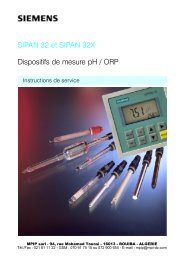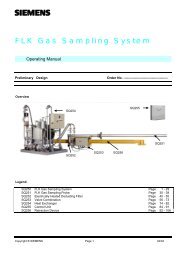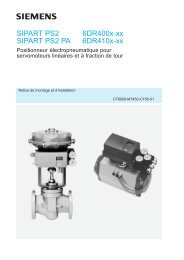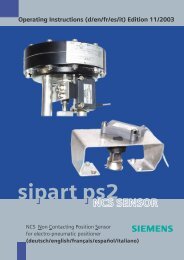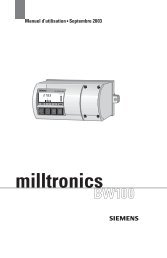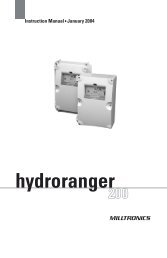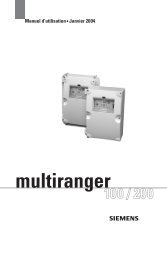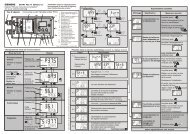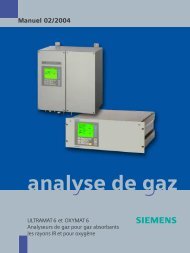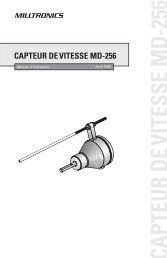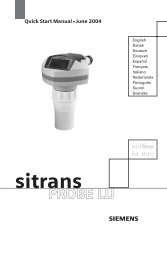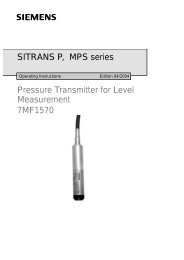sitrans tk/tk-h
sitrans tk_tk h_1jn0.. - MPIP
sitrans tk_tk h_1jn0.. - MPIP
- No tags were found...
Create successful ePaper yourself
Turn your PDF publications into a flip-book with our unique Google optimized e-Paper software.
7NG312*--1JN01, 7NG312*--2JN01<br />
Operating instruction<br />
1 Technical Description<br />
1.1 Area of Application<br />
The SITRANS TK transmitter can be used in all branches of industry. Thanks to its compact size, it can be installed<br />
in the type B or larger terminal housing (DIN 43729). Thanks to ist universal input stage, the following sensors/signal<br />
sources can be connected:<br />
D Resistance thermometers<br />
D Thermocouples<br />
D Resistance-based sensors/potentiometers<br />
D DC voltage sources<br />
The output signal is an impressed direct current from 4 to 20 mA that corresponds to the sensor characteristic.<br />
Transmitters belonging to the ”type of protection: Non incendive” type can be installed in explosion<br />
hazard areas (Zone 2). Transmitters of type ”intrinsically safe type of protection” can be installed in<br />
explosion hazard areas (zone 1). The conformity certificates correspond to the European standard<br />
(CENELEC).<br />
1.2 Product feature<br />
D Two-wire transmitter<br />
D Can be installed in a terminal housing type B or larger (DIN 43729)<br />
D Capable of communication (HART protocol V 5.7 in the case of TK-H, proprietary protocol in the<br />
case of TK); the sensor, the measurement range and many other parameters are therefore programmable.<br />
D Electrical isolation (500 V AC)<br />
D Intrinsically safe type for use in hazardous areas<br />
D Two additional taps for multimeter connection allow measurement of the current signal without interrupting<br />
the loop.<br />
1.3 Operating principle<br />
The measured signal supplied by a resistance-based sensor (2, 3 or 4-wire connection) or by a thermocouple<br />
is amplified in the input stage. The voltage, which is proportional to the input quantity, is<br />
then converted to digital signals in an analog/digital converter ¡. Via electrical isolation ©, these signals<br />
are forwarded to the microprocessor. In the microprocessor ¢ they are converted in accordance<br />
with the sensor characteristic and further parameters (measuring range, attenuation and ambient temperature<br />
etc.).<br />
The signal prepared in this way is converted in a digital/analog converter £ to an impressed direct<br />
current of 4 to 20 mA. The auxiliary power source is located in the output signal circuit.<br />
24<br />
SITRANS TK/TK-H<br />
A5E00226012--01



![[ ]](https://img.yumpu.com/53283450/1/184x260/-.jpg?quality=85)
